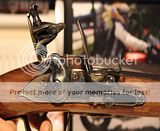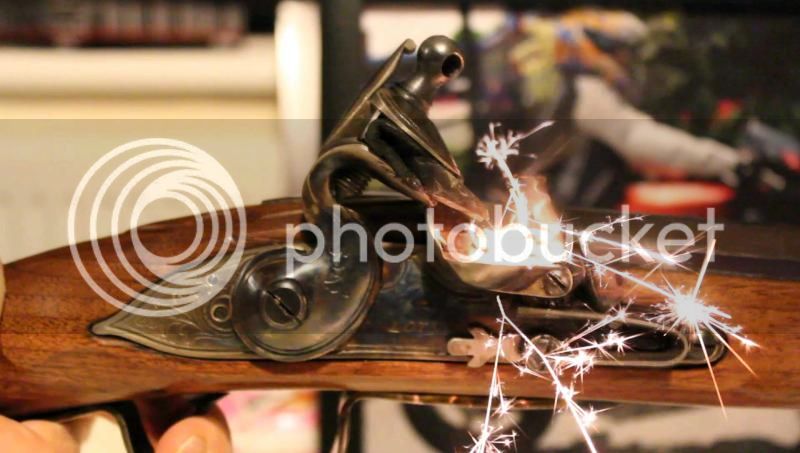Please Lord calm the told you so brigade!
Some of us a limited to what we can buy hence my purchase of the faux trade gun from Pedersoli. In one years ownership it has taken plenty but only just!!
That darned lock is a pain and being a fussy fiddler had another look at it! It has been quite reliable will flints I cut/napped, not pretty but they worked. Back on the commercial flints and poop goes the reliability.
Studying the lock action I decided to alter the heel/cam area.

The built up heel seems to evened the load on the frizzen through the flints stroke on it and although lacking a field test for now, in the gun room the commercial flint seems more reliable than it did the night before. So here is hoping!
It is a poor lock for sure though!
I envy you fellers who have easy access to good lock makers!
Comments welcome but no whipping please!
B.
Some of us a limited to what we can buy hence my purchase of the faux trade gun from Pedersoli. In one years ownership it has taken plenty but only just!!
That darned lock is a pain and being a fussy fiddler had another look at it! It has been quite reliable will flints I cut/napped, not pretty but they worked. Back on the commercial flints and poop goes the reliability.
Studying the lock action I decided to alter the heel/cam area.

The built up heel seems to evened the load on the frizzen through the flints stroke on it and although lacking a field test for now, in the gun room the commercial flint seems more reliable than it did the night before. So here is hoping!
It is a poor lock for sure though!
I envy you fellers who have easy access to good lock makers!
Comments welcome but no whipping please!
B.










